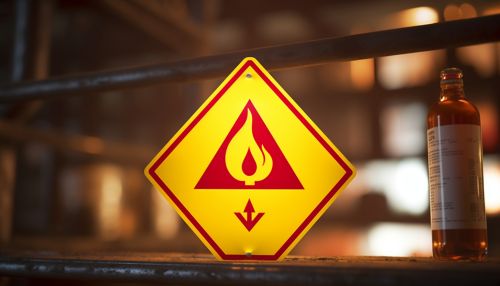Flammable gas
Introduction
Flammable gas refers to any gas that can ignite and burn when mixed with air, or an oxidizing agent, under specific conditions. These gases, which include but are not limited to methane, propane, and hydrogen, are commonly used in various industries due to their energy content and combustibility. However, their flammability also presents significant safety risks, necessitating careful handling and storage.


Classification
Flammable gases are classified based on their flammability limits, which are the minimum and maximum concentrations of the gas in air that can ignite. These limits are expressed as a percentage volume of gas in the air and are known as the Lower Flammability Limit (LFL) and the Upper Flammability Limit (UFL). Gases with a wide flammability range, such as hydrogen, are particularly hazardous as they can ignite over a broad range of concentrations.
Properties
The properties of flammable gases, including their flammability limits, ignition temperature, and autoignition temperature, greatly influence their behavior in a fire scenario. The ignition temperature is the minimum temperature at which the gas can ignite in air without a spark or flame. The autoignition temperature is the minimum temperature at which the gas can ignite spontaneously without any external ignition source.
Usage
Flammable gases are widely used in various industries due to their energy content and combustibility. For example, methane is the primary component of natural gas, which is used for heating, cooking, and electricity generation. Propane is commonly used in portable cooking and heating appliances. Hydrogen, due to its high energy content, is used in the chemical industry and is being explored as a potential clean energy source.
Safety Measures
Due to the inherent risks associated with flammable gases, numerous safety measures are in place to prevent accidents. These include proper storage and handling procedures, use of flame arresters and pressure relief devices, regular equipment maintenance, and comprehensive training for personnel. In addition, various detection and alarm systems are used to alert personnel to gas leaks or other hazardous conditions.
Environmental Impact
While flammable gases are valuable resources, their extraction and use can have significant environmental impacts. Methane, for example, is a potent greenhouse gas, and its release during extraction and transportation contributes to climate change. Additionally, the combustion of flammable gases releases pollutants such as carbon dioxide and nitrogen oxides into the atmosphere.
